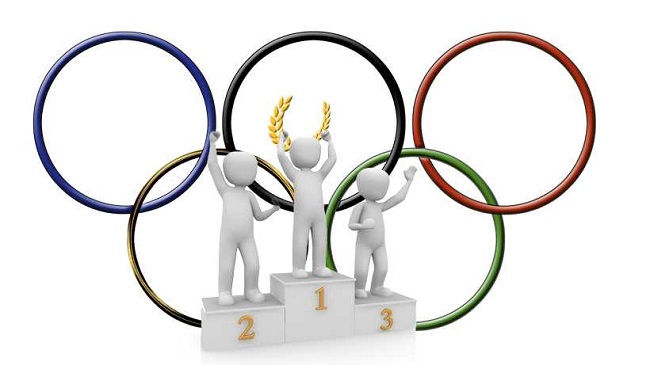Though she and her teammate Beatrice Masilingi (who finished fifth) set world records in the 400-meter dash back in April, World Athletics ultimately disqualified them from Olympic consideration. But they were still allowed to participate in the 200-meter dash.
The Olympic Games have often been a platform where extraordinary human feats take the spotlight. Every edition witnesses performances that mesmerize, inspire, and occasionally, raise eyebrows.
Such was the case with athletes Christine Mboma and Beatrice Masilingi, whose remarkable achievements led to some questions among observers and sports aficionados.

Contents
- 1 So, Why did Masilingi and Mboma Not Get to Finish their 400-Meter Races?
- 2 The DSD Rules Only Apply to Certain Athletes.
- 3 I don’t see Why the Rules Only Apply to Distances of 400 Metres to one Mile.
- 4 And What if a DSD Athlete Really Wants to Compete in One of those Forbidden Events?
- 5 So, Why should World Athletics be Concerned About Mboma’s Situation?
- 6 Who are Some Other Notable Athletes Who have been Prevented from Competing Due to DSD Rules?
- 7 For What Reason is it Crucial to Discuss, Yet Still a Taboo?
- 8 Conclusion
So, Why did Masilingi and Mboma Not Get to Finish their 400-Meter Races?
Eventually, tests were conducted when concerns were raised about the very quick turnaround. They found that the two have developmental sexual differences (DSD), which allow them to manufacture high levels of testosterone and provide them an unfair advantage over typical female athletes.
Read Also:
- How to Watch Men’s 200m Final
- Sui Wenjing and Han Cong Relationship
- Swiss Olympic Women’s Beach Volleyball Team
Although World Athletics established eligibility requirements for female classification in May 2019 with the goal of creating a level playing field in women’s athletics, these rules now only apply to a subset of events ranging from the 400 metres to the mile.
They both decided to participate in the 200-meter dash. The rules are exclusive to international competitions and do not apply to smaller-scale meets on a national or regional level.
In the case of DSD athletes, the most well-known person who was barred from competing in Tokyo is South African Caster Semenya, who won the 800 metres at the 2016 and 2012 Olympics.
The DSD Rules Only Apply to Certain Athletes.
These DSDs include, but are not limited to, the following characteristics: 1) male chromosomes (XY), not female chromosomes (XX); 2) testes, not ovaries; 3) circulating testosterone in the male range (7.7 to 29.4 nmol/L), rather than the (much lower) female range (0.06 to 1.68 nmol/L); and 4) the ability to make use of that testosterone circulating within their bodies (i.e.
I don’t see Why the Rules Only Apply to Distances of 400 Metres to one Mile.
Although 46 XY DSD athletes would have an advantage in all events due to testosterone levels in the male range, the evidence available to World Athletics when the regulations were finalised suggested that track events ranging from 400 metres to one mile would benefit most from increased circulating testosterone.
And What if a DSD Athlete Really Wants to Compete in One of those Forbidden Events?
Down continue competing at an international level, they must reduce the amount of testosterone in their blood to below 5 nmol/L (nanomoles per litre) for a minimum of six months. This is the maximum amount that a healthy woman with ovaries would have.
So, Why should World Athletics be Concerned About Mboma’s Situation?
Normal female competitors are frustrated because they believe World Athletics has not done enough to create a level playing field in light of Mboma’s incredible 200-meter dash. Many people hold the view that the 200-meter dash, among others, should be removed from competition for DSD competitors.
Shaunae Miller-Uibo of the Bahamas, who took gold in the 400 metres at the 2016 Rio Olympics while placing last in the 200 metres, addressed the topic after her disappointing showing in the latter event in Tokyo.
She said that the prohibition only applied to a certain number of competitions: “The only thing actually is (the suspension) was for a select number of competitions,” she stated.
After Mboma’s silver performance, renowned sports scientist Ross Tucker told CNN, “World Athletics won the case at the Court of Arbitration when Caster Semenya challenged the policy and they won the case because their principle and their theory were so strong but they did not have much good evidence for it.”
Athletes can be disqualified from the 400-meter dash yet still compete in the 200-meter dash due to the policy’s convoluted and contradictory history.
They may benefit from these masculine hormones, but sports are hampered by the fact that the 200-meter dash is off-limits due to the policy’s historical evolution. What they do in response to the Mboma uprising will be fascinating to see unfold.
Who are Some Other Notable Athletes Who have been Prevented from Competing Due to DSD Rules?
Semenya, Francine Niyonsaba of Burundi, and Margaret Wambui of Kenya all won medals in the 800 metre run at the 2016 Olympics. All three women competed for DSD. Semenya competed in the 5000-meter race to earn a spot in the Tokyo Olympics, but she was not successful.
Dutee Chand, the current fastest woman in India, was previously prohibited from competing due to the IAAF’s regulations for female athletes with hyperandrogenism. Since the 100 and 200 metres are not covered by the new rules, Chand can now run without interference.
In addition, a few competitors have switched to shorter sprints or retired entirely, suggesting that there may be other DSD cases in India.
For What Reason is it Crucial to Discuss, Yet Still a Taboo?
For a long time, it has been common knowledge that “people realise that the male-female distinctions in sport are so great that if we didn’t have a closed, protected category for women, there would effectively be no women in the Olympic Games,” as stated by Tucker.
However, “when you have persons with this DSD, there is an ethical dilemma since sport gets to tell what gender or sex they are.”
The Meteoric Rise of Mboma and Masilingi
Both hailing from Namibia, Christine Mboma and Beatrice Masilingi stormed into the global athletics scene with their impressive timings in the 400m races. Their swift acceleration and robust finishing style made them fan favorites and contenders for Olympic medals. However, their sudden ascendancy in the sport also drew attention, with some questioning the origins of their success.
2. Natural Talent or More?
While most applauded the duo’s natural talent and dedication, a section of the press began to probe deeper. There were questions about their training regimen, their preparation, and even their genetic make-up.
It’s worth noting that both athletes were subject to the World Athletics’ rules on Differences of Sex Development (DSD), which mandates testosterone levels for female athletes. However, their exceptional performance was a testament to their ability to adapt and excel despite restrictions.
3. The Guiding Force: Coach of Mboma and Masilingi
Behind the success of any athlete lies the tireless work of their coach. For Mboma and Masilingi, their progress and training were overseen by their dedicated coach, Henk Botha.
Botha, an experienced figure in the athletics community, played a pivotal role in harnessing the potential of these two athletes. His training methods, combined with the innate talent of Mboma and Masilingi, made for a winning formula.
Under Botha’s guidance, the duo trained hard, focusing on their strengths and working on their weaknesses. Botha’s coaching philosophy centered around individual attention and understanding each athlete’s unique capabilities.
He was instrumental in helping them navigate the challenges posed by the DSD regulations and ensuring they remained at the top of their game.
Read Also:
- Serena Vs Venus Us Open 2018
- Shelly Ann Fraser Pryce Fastest Time
- Street League Skateboarding 2021 Jacksonville FL
Conclusion
The achievements of Christine Mboma and Beatrice Masilingi in the world of athletics have been nothing short of spectacular.
While their feats raised questions in some quarters, it’s essential to recognize the combination of natural talent, sheer hard work, and exceptional coaching that went into their success.
Their journey is a testament to the spirit of sportsmanship and the relentless pursuit of excellence.























